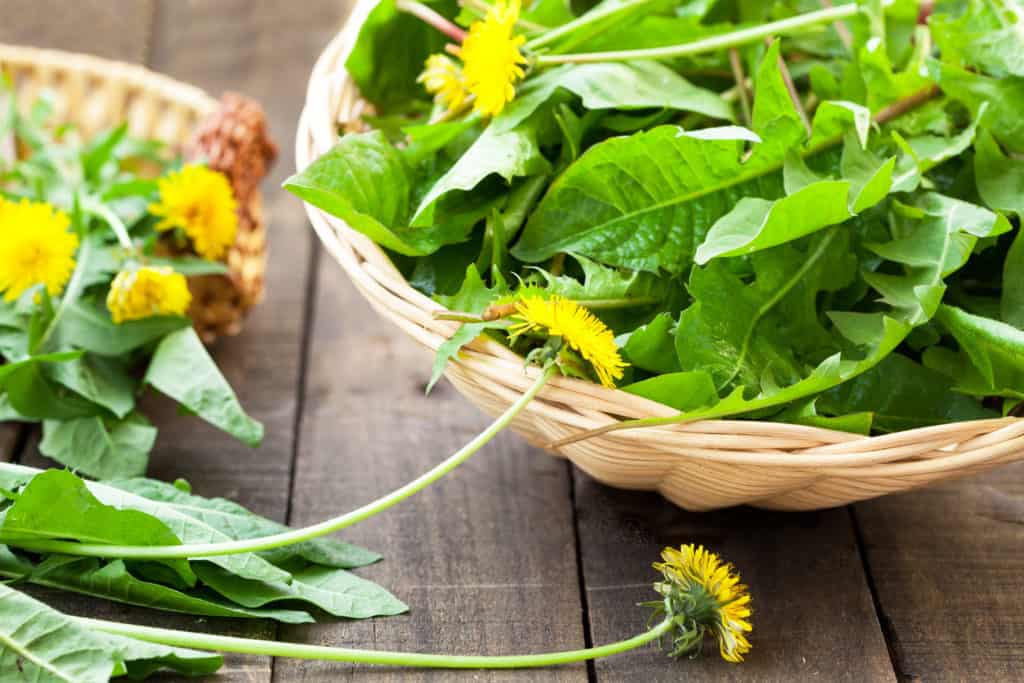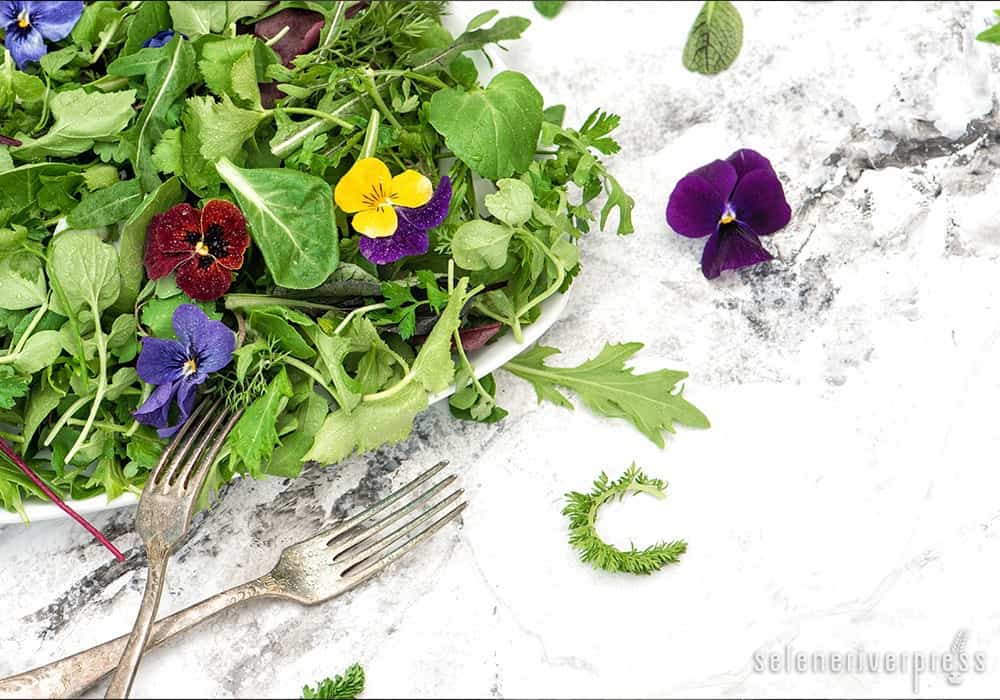In our far distant past, probiotics, prebiotics, fiber from heritage grains, pesticide-free homegrown vegetables and fruits, and yes, bitter herbs, were all just a normal part of our daily diet. I honestly doubt that our ancestors understood the excellence of the foods they ate! It’s just the ways things were. And then…
Then came the World Wars and modern farming methods. Then came a sharp decline in herbal and whole food supplementation in favor of chemical and surgical protocols, which are often unnecessary. And then, sadly, came the refining of our foods. Today we’re still experiencing the ongoing transition of the modern diet to packaged, refined poisons that many of us choose to believe are “healthy” foods!
While modernization has brought about many wonderful inventions—and will no doubt continue to be the natural progression of our existence—the devastating change in our diet to refined foods stripped of nutrients has, in my humble opinion, seriously hindered what could otherwise be a happier and healthier existence.
I have an ongoing love for ancestral foods, and I grow bitter plants in my herb garden to use in highly nutrient dense salads. Because of this, it occurred to me to that many of you might like a little primer on growing your own bitter herbs to add to your diet this year.
A Bit of Bitters History
“Bitters occupy a curious niche in the history of food and drinks, especially given their early history as patent medicines with rather dubious reputations. Take one of the oldest, Angostura. Originally, the company’s greenish-tinted bottles contained an herbal concoction made from roots, bark, and spices. The “Aromatic Bitters” took their name from the Venezuelan city where they were first created (Angostura was subsequently rechristened Cuidad Bolivar in 1846). Interestingly, early botanists also gave the name Angostura to three different species of trees, including Galipea officinalis. Because the bitters’ recipe is a tightly guarded secret, locked in a vault and known by only five employees, whether the trademarked concoction once contained the bark from any of these Angosturas remains something of a mystery. Either way, the recipe has since been reformulated—in much the same way that Coca-Cola removed the potent alkaloids in coca leaves—and now Angostura neither contains Angostura, nor is it produced in Angostura.”
—“A Brief History of Bitters,” by Peter Smith, Smithsonian.com
The Beneficial Effects of Bitters
You can find a great many resources that describe the wonderful health benefits of bitters. To get you started, I’ve gathered some expert commentary below that I think is worthy of your attention. Many people use bitters in the form of a tincture a few minutes before each meal. (Should you want to try this, I recommend Urban Moonshine.) I’ve also found that bitter greens I’ve grown myself or picked up from my local health food store make for great salads. You can also use greens on your favorite sandwich instead of lettuce, which, in my opinion, makes for a much healthier, value-added meal. The benefits of bitter herbs cannot be underestimated.
In her book Healing Tonics, author Jeanine Pollak states that bitters make the digestive process more efficient by stimulating the enzymes and fluids that help you digest food quickly. For more information, I encourage you to view this wonderful online PDF about bitters from the famous author and herbalist Jim McDonald.
According to McDonald, bitters signal your stomach to begin secreting gastrin, the hormone that controls how much acid your stomach produces. Jeanine Pollak also indicates the importance of bitters in that we need sufficient acid to completely break down our foods, including carbohydrates and proteins. This is the case even for healthy, nutrient dense foods since there’s no guarantee that we’re producing sufficient acid to fully digest them.
This is also the reason I recommend Betaine Hydrochloride for those who don’t get a sufficient amount of bitters in their diet. The natural effect of proper acid production means that you may experience less acid reflux—or even none at all. And it definitely means less or no constipation! In my case, it helps for both. (Smile) Oh happy little gut!
Bitter Herbs of the Bible
Bitter herbs are no strangers in the Old Testament, which gives us a great perspective of just how long they’ve been used throughout history, especially during the biblical era.
However, for our purposes, I’m only listing the eight bitter herbs that, in my opinion, are commonly available and safe for use in salads, sandwiches, and tinctures. (You can find a complete list of biblical herbs along with other invaluable information here.)
I reference my favorite website, Herbs 2000, to outline the specific health benefits of the following herbs. I highly encourage you to dedicate an area of your yard for growing these medicinal bitter herbs and using them in your next salad or tincture. Personal note: Be sure you grow the Latin-named plants as shown below and read the entire description and cautions for each one.
- Chicory (Cichorium intybus): “The root of the chicory has been used in the folk medicine of Pakistan for treating liver disease and hepatic system related disorders. A group of clinical researchers recently isolated a phenolic compound called esculetin from the extracts of the chicory root, and they further confirmed that is a hepatoprotectant compound.”
- Corander (Coriandrum sativum): “Studies undertaken recently have endorsed the use of coriander in the form of a soother for the stomach in adults as well as colicky infants. Coriander encloses an antioxidant which is effective in putting off the rotting of animal fats. In addition, this herb also encloses certain substances that destroy bacteria and fungi responsible for spoiling meat. Similar substances are present in cilantro (the leaves of the coriander plant) too, and they are effective in preventing wounds from being infected.”
- Dandelion (Taraxacum officinale): “The dandelion plant is used as an herbal remedy for alleviating painful urinary ailments in the Chinese system of medicine. Dandelion roots are used for other forms of herbal remedies, and their essential function in the body is different. Mostly they are used in the treatment of the liver and are used to bring about improvements in its overall functioning, and they also find use as a mild laxative.”
- Endive (Cichorium endivia): “The taste of endive juice is so bitter that it is almost impossible to drink it without blending it with other items. Ideally, endive juice should be blended with juices extracted from other pleasantly flavored vegetables. In addition to reducing the bitterness of endive juice, this also helps to augment the nourishment value of the drink and support the health of the muscular system as well as the optic nerves.”
- Hawkweed (Hieracium pilosella): “Mouse-ear is used to cure a number of health conditions. For instance, this herb soothes the muscles of the bronchial tubes, encourages the cough impulse and, at the same time, lowers mucus production. Such a mishmash of exploits of mouse-ear makes the herb useful in every respect while treating respiratory problems.”
- Horehound (Marrubium vulgare): “Different parts of the herb have different beneficial effects, thus the leaves and the tender flowering stems possess an anti-septic and anti-spasmodic effect. These also contain compounds that are cholagogue and diaphoretic, which aid digestion and are diuretic. The herb also has emmenagogue, strongly expectorant and tonic effects.”
- Horseradish (Armoracia rusticana): “Although horseradish is presently underrated as a therapeutic herb, the plant possesses several remedial features. Use of this herb robustly invigorates the digestive system by enhancing absorption of foods consumed, augmenting the secretion of gastric juices.” (Personal note: Although a powerful bitter, horseradish is highly invasive and very hard to get rid of! I only use the new horseradish leaves in my salad or make horseradish sauce with the roots. Its leaves of any size are also great to put in your dill pickles instead of grape leaf. Please read the cautions on this particular bitter herb.)
- Mints (Mentha): “In contemporary times, mint is primarily used in home remedies as well as in pharmaceutical medications to ease stomach and intestinal gas attributable to specific foods.”
With further research, I found the website for Whistling Train Farm. This is a wonderful resource with more information on bitter herbs and some great salad recipes. For example, read their section on the chicory species they grow. You’ll find recipes for all the types of chicory (see list below). If they can grow them, we can too!
Chicory Species at Whistling Train Farm
- Frisée (curly endive)
- Escarole (also called batavian)
- Pan di Zucchero (Italian for “sugarloaf,” a mild chicory with a huge, swirling head of green)
- Chioggia radicchio (this is the most common radicchio, with large red and white heads)
- Treviso radicchio (romaine-shaped heads of red and white)
- Castelfranco radicchio (baseball-sized heads of red and green)
- Dandelion (they state their cultivated variety has larger leaves than the garden weed and is less bitter)
- Puntarelle
Afterthoughts from the Traditional Cook
Since a large part of my life is intertwined with the Weston A. Price Foundation, I want to introduce an excerpt from “Bitters: The Revival of a Forgotten Flavor,” an article from WestonAPrice.org:
“Of all the flavors to grace our palate, there is perhaps none as fascinating as that of bitterness. It is a flavor that is universally despised—used linguistically to characterize pain, harshness and things that are extremely difficult to bear…Yet, it is also a flavor used in cultures the world over to strengthen digestion, cleanse the body and build vitality—in short, considered an ingredient essential to good health…In fact, so many of the plants humans have traditionally used to tonify and heal the body are bitter tasting that we still today often rate the strength and usefulness of our medicine by how terribly bitter it tastes.
“It is unfortunate, then, that our modern diet seems to be completely lacking in the wild bitter tasting plants our ancestors considered so fundamental to their health…Many of the diseases riddling our modern culture—from indigestion and gastric reflux to metabolic disorders ranging from elevated cholesterol to type 2 diabetes—seem to all point back to the deficiency of bitterness in our diets, and the lack of the protection and tone it imparts to our digestion and metabolic functions….
“Not a Medicine but a Necessity
“According to many, bitter herbs and foods play a helpful role in alleviating many of these conditions not so much because they act as specific remedies but because they provide components necessary to overall good health…It is very possible that the current national health crisis could be radically turned around simply by rebalancing our palate with the medicinal virtues of bitterness.”
[xyz-ihs snippet=”End-Authors-Note”]Note from Maria: I am a Certified Natural Health Professional, CNHP, not a medical doctor. I do not diagnose, prescribe for, treat, or claim to prevent, mitigate, or cure any human diseases. Please see your medical doctor prior to following any recommendations I make in my blogs or on my website.
Images from iStock/LiliGraphie (main image), meteo021 (dandelions), Wojciech Kozielczyk (girl).




